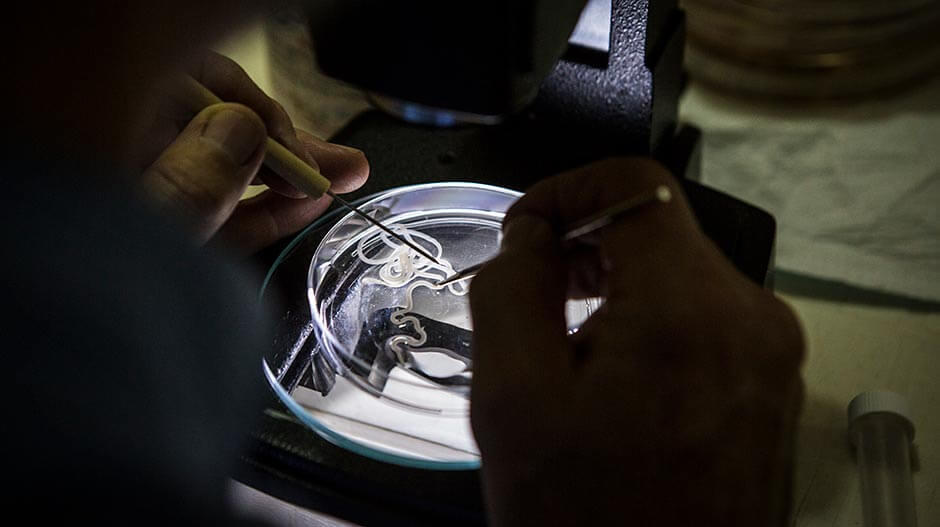
Caption
A parasitologist examines a worm under a microscope in Bongor, Chad. Multiple examination methods are used to confirm specimens are Guinea worms.
Credit: The Carter Center/J. Hahn

A parasitologist examines a worm under a microscope in Bongor, Chad. Multiple examination methods are used to confirm specimens are Guinea worms.
Have you heard of Guinea worm disease?
Many people have not.
That’s probably because there are so few cases of this Neglected Tropical Disease left.
NTDs are a group of 20 preventable and treatable diseases, including Guinea worm, that affect more than 1.7 billion people around the world. NTDs cause disability and disfigurement, and some can be fatal.
In 1986, the parasite, which is an organism that feeds off another organism to survive, afflicted an estimated 3.5 million people a year in 21 countries in Africa and Asia.
Now, Guinea worm disease is nearly eradicated thanks in large part to the work of The Carter Center and its partners, which includes the countries themselves.
The incidence of Guinea worm has been reduced by more than 99.99 percent to just 13 provisional cases in 2022.
Official confirmation of case count is expected next month.
The Carter Center, founded in 1982 by former President Jimmy Carter and former first lady Rosalynn Carter, continues its work to eradicate Guinea worm in five countries affected by the disease: Angola, Chad, Ethiopia, Mali, and South Sudan.
Carter himself felt delighted by the news last month that Guinea worm is on track to become the second disease ever eradicated. The first was smallpox.
“Rosalynn and I are pleased with this continued advance toward eradicating Guinea worm disease,” Carter said. “Our partners, especially those in the affected villages, work with us daily to rid the world of this scourge. We are heartened that eradication can be achieved soon.”
There is neither a drug treatment for Guinea worm disease nor a vaccine to prevent it.
The parasitic worm is found primarily in poor communities in remote parts of Africa that do not have safe water to drink.
The larvae develop into adults within the human host. After about a year, a meter-long pregnant female worm emerges slowly through a painful blister in the skin, often of the legs or feet. A sufferer may seek relief by dipping the affected limb in water. However, contact with water stimulates the emerging worm to release its larvae and start the cycle anew. Guinea worm disease incapacitates people for weeks or months, reducing individuals’ ability to care for themselves, work, grow food for their families, or attend school.
Treatment involves winding the worm around a piece of gauze or small stick and manually extracting it — a slow, painful process that often takes weeks.
The skin lesions often develop secondary bacterial infections, which exacerbate the suffering and prolong the period of disability.
The Guinea Worm Eradication Program is wiping out this ancient disease mainly through community-based interventions to educate and change behavior, such as teaching people to filter all drinking water and preventing transmission by keeping anyone with an emerging worm from entering water sources.
Read more here.